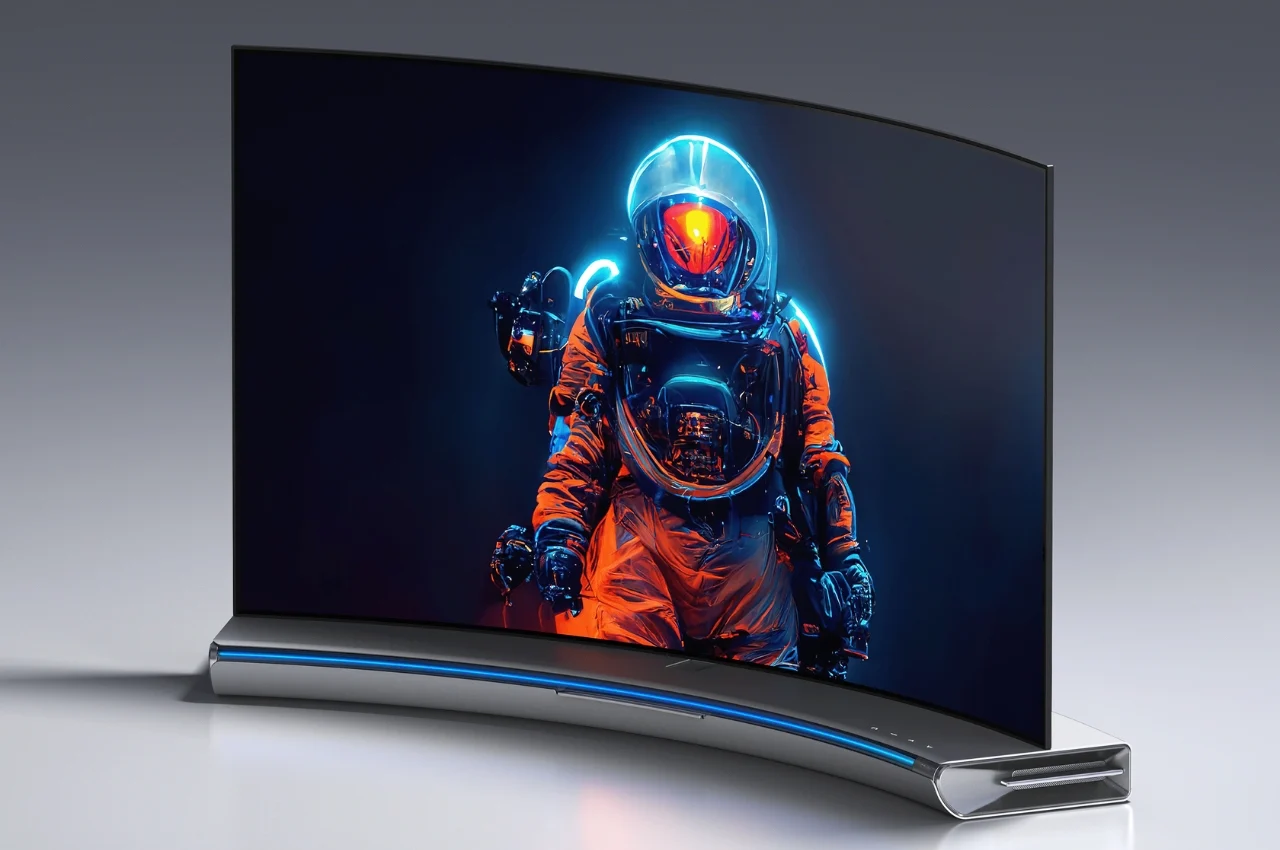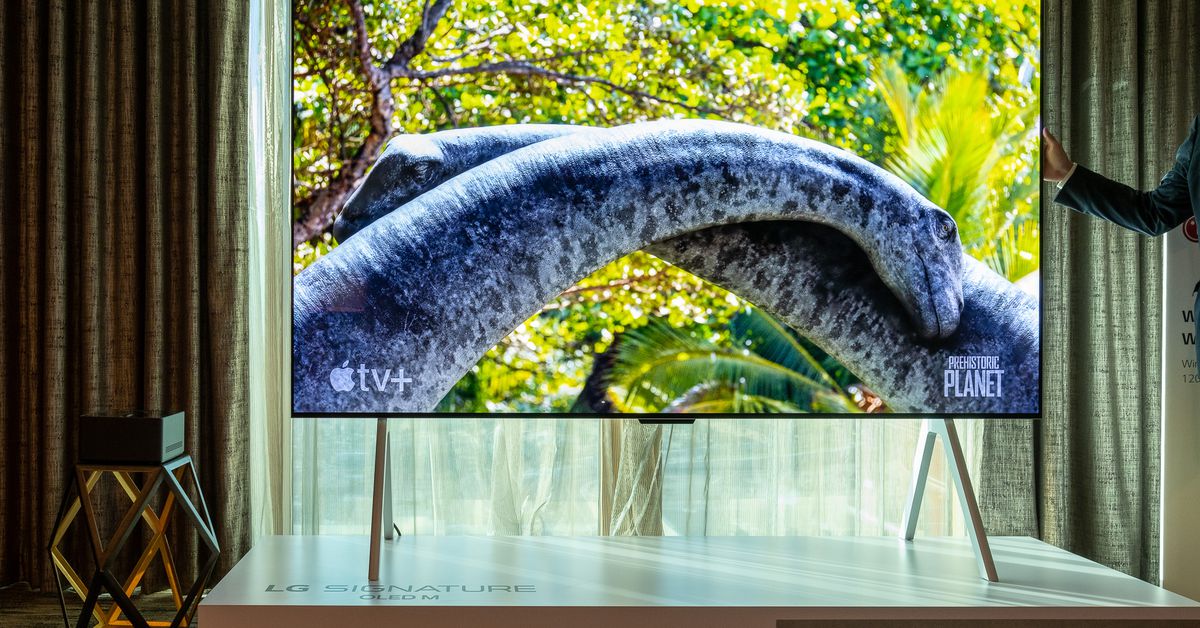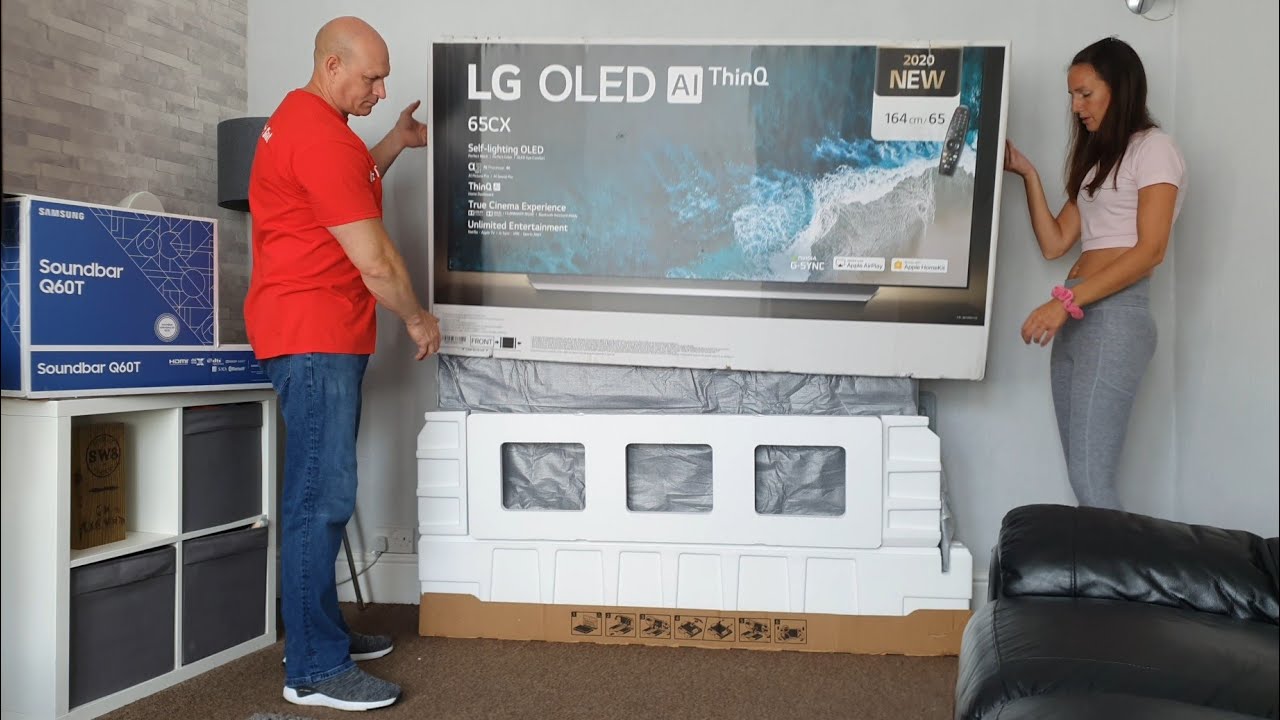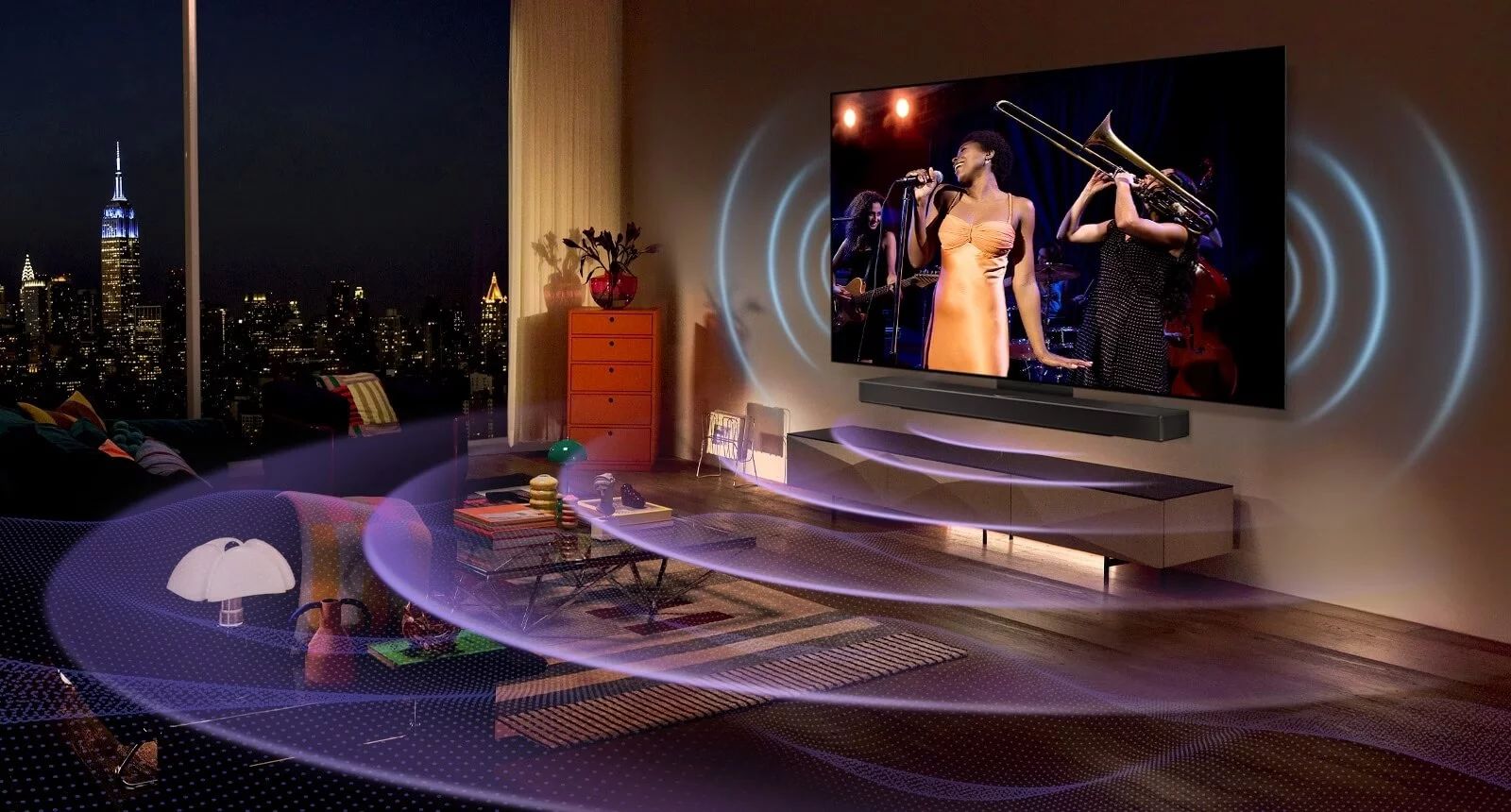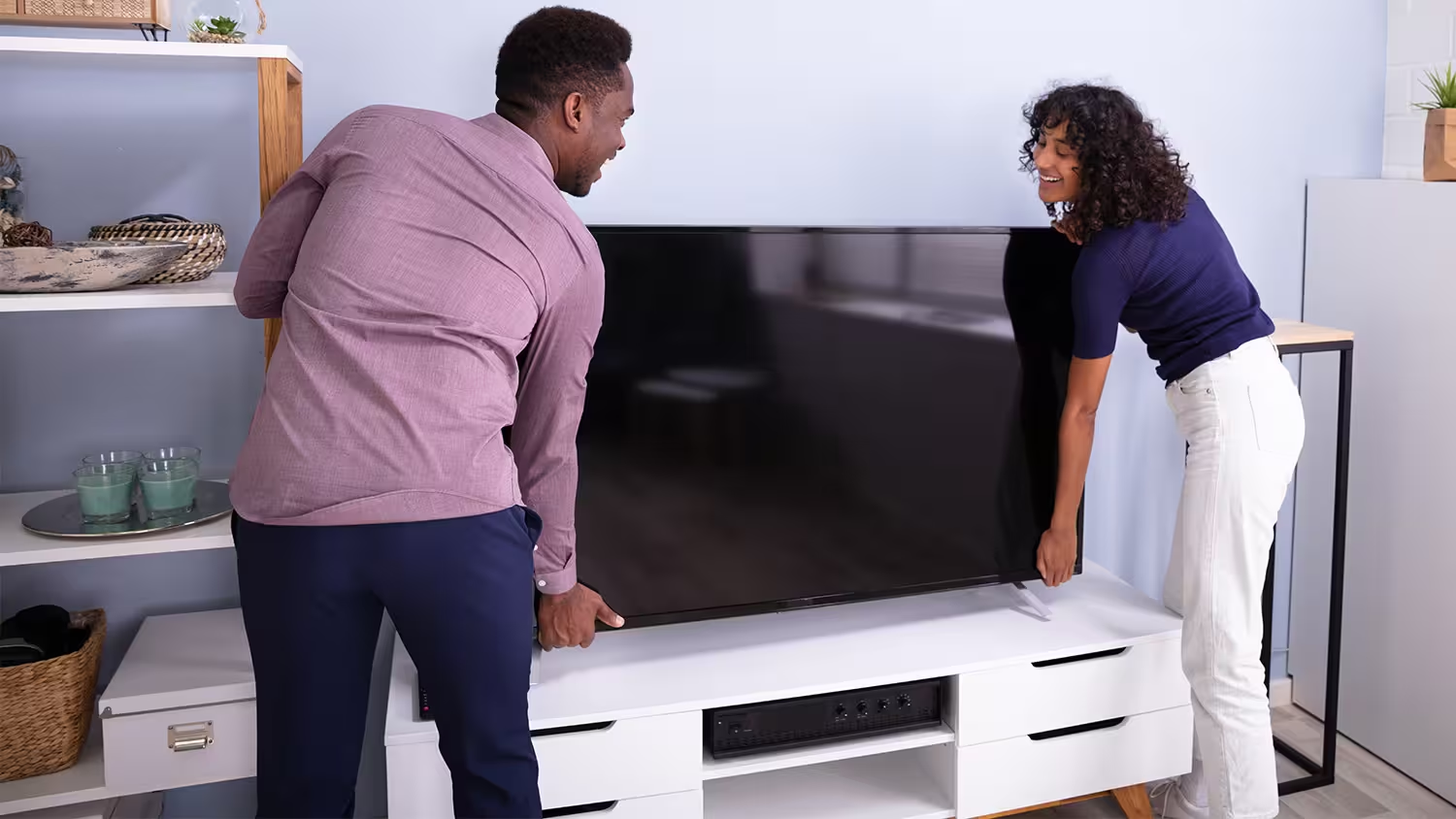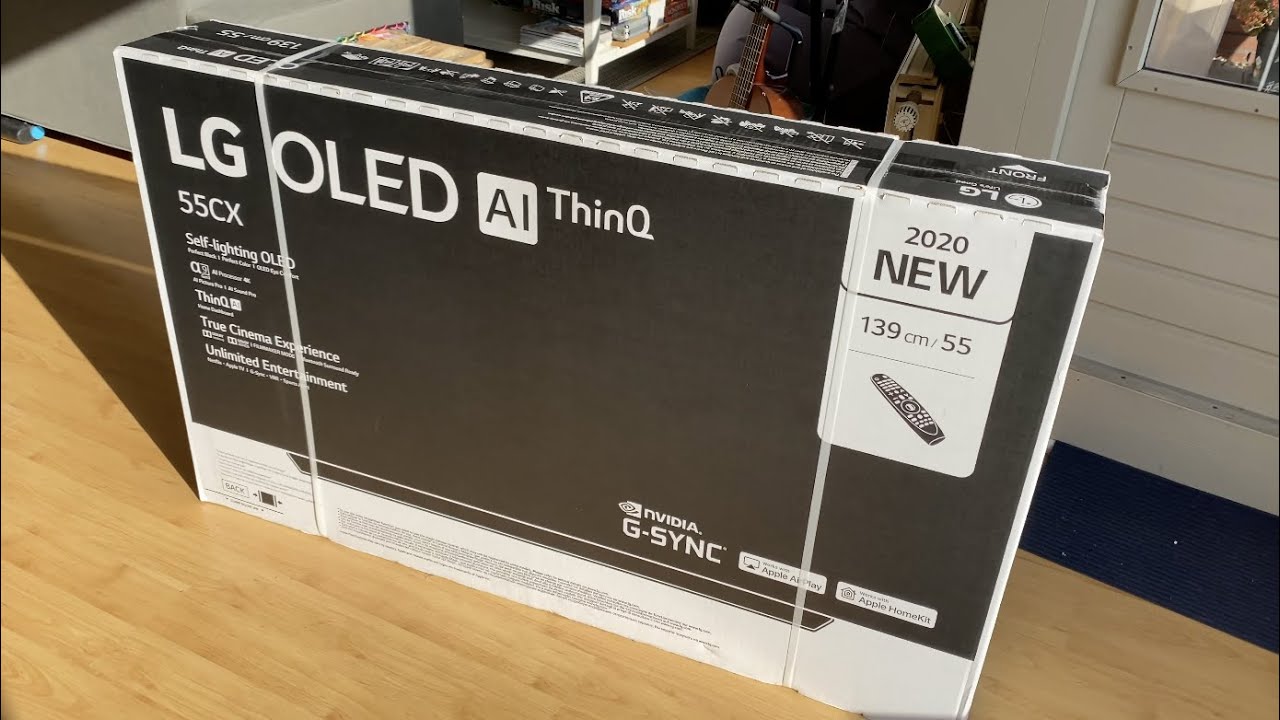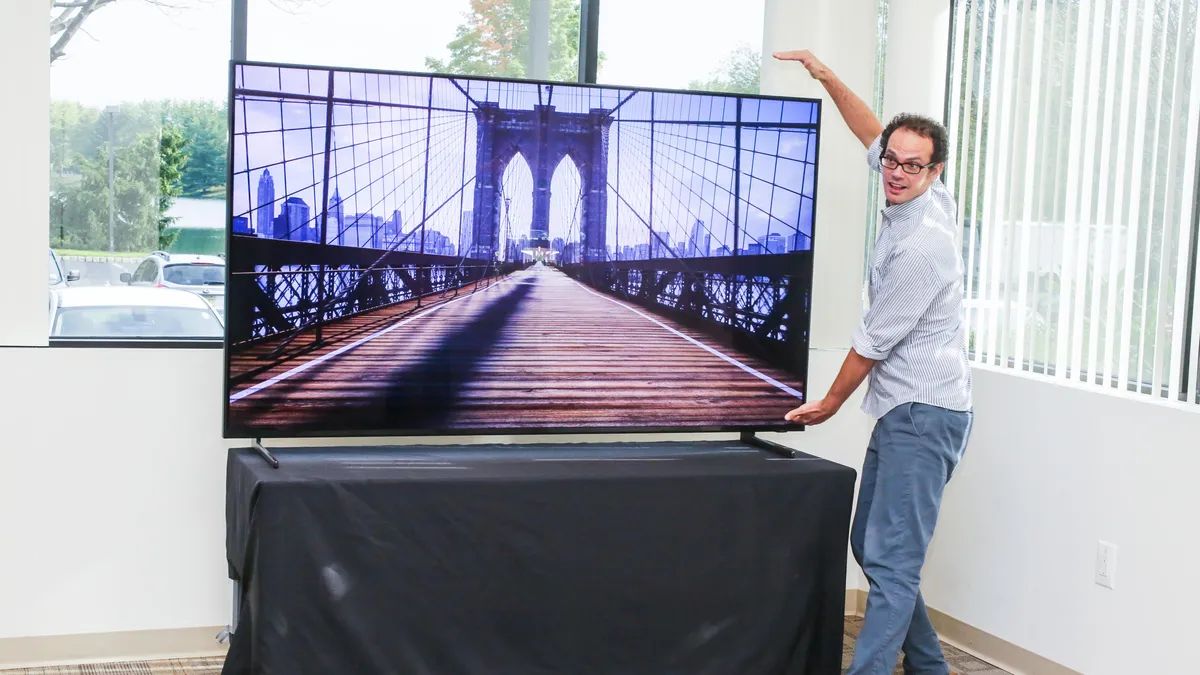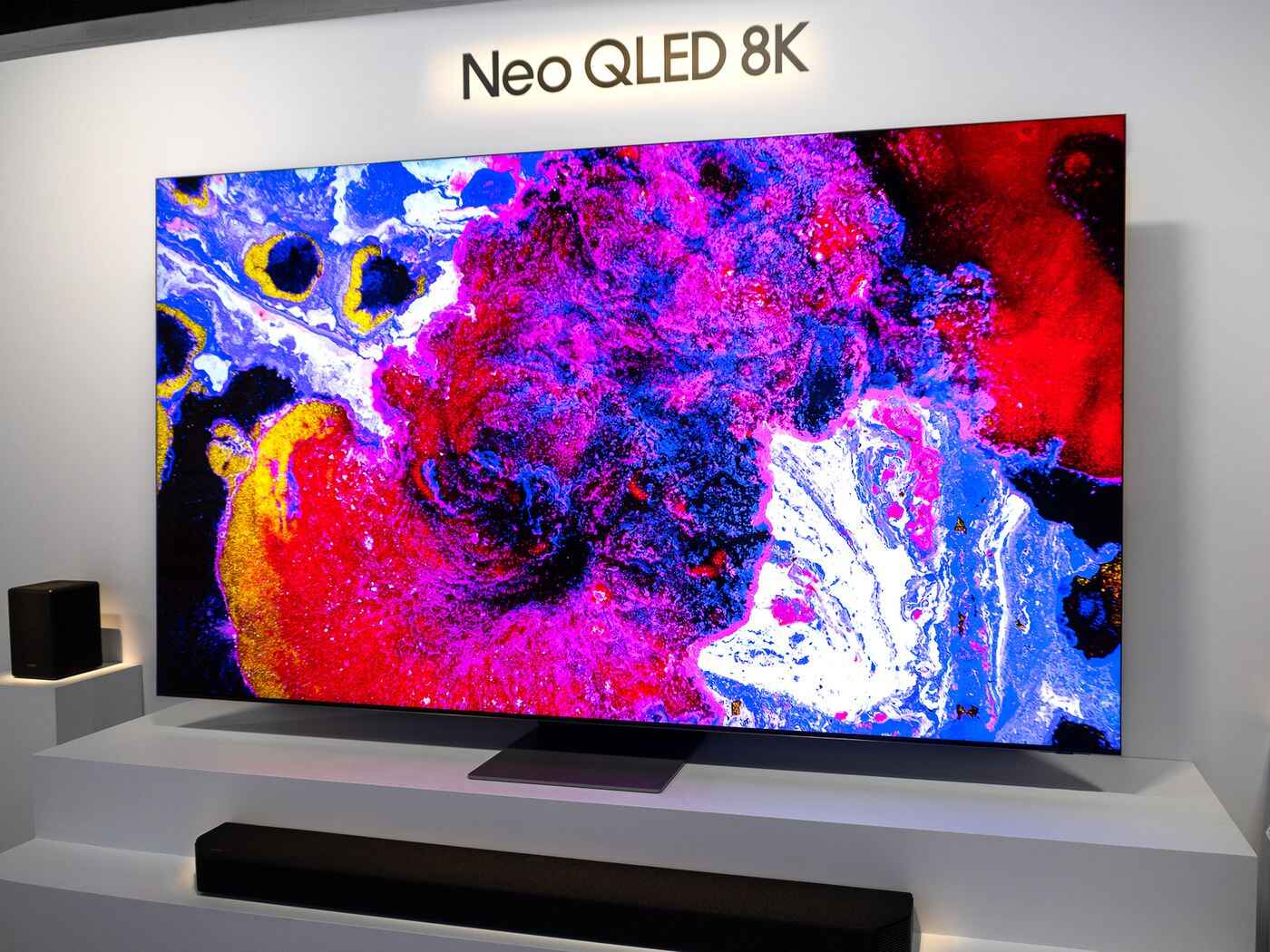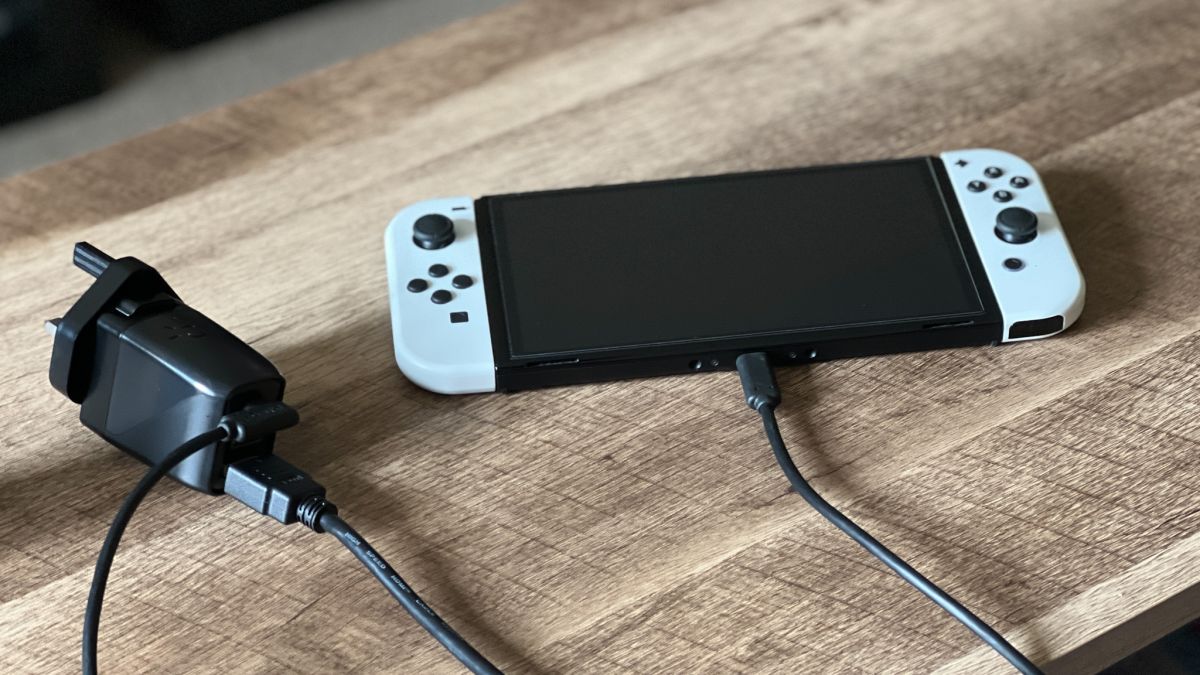Introduction
Welcome to the future of television – OLED technology has revolutionized the way we experience our favorite shows and movies. One of the most captivating features of OLED TVs is their remarkable flexibility. Unlike traditional LCD TVs, OLED TVs can bend and curve, offering a whole new level of immersive viewing. But just how much can you bend an OLED TV?
In this article, we will delve into the world of OLED technology, explore the limitations and advantages of bending an OLED TV, and provide tips on maintaining their durability. So, get ready to have your mind blown as we dive into the fascinating world of bendable OLED TVs.
OLED, or Organic Light-Emitting Diode, is a display technology that uses organic compounds to emit light when an electric current is applied. What sets OLED apart from other display technologies is its ability to produce true blacks and vibrant colors, thanks to each pixel being self-emissive.
While OLED technology has been around for a while, the introduction of flexible OLED panels has taken the TV industry by storm. These bendable displays use a thin, flexible substrate that allows them to be curved and flexed without compromising image quality or performance.
With the advent of OLED TVs, watching your favorite shows or movies has become an immersive experience like never before. The flexibility of OLED panels opens up new possibilities for design and functionality, allowing TVs to be curved, rolled up, or even transformed into different shapes.
In the following sections, we will explore the factors that affect the bendability of OLED TVs, discuss how far you can actually bend them, as well as the advantages and risks associated with bending these cutting-edge displays. So, let’s dive in and unravel the mysteries of bendable OLED televisions!
Understanding OLED Technology
Before we delve into the world of bendable OLED TVs, it’s important to understand the technology behind them. OLED, or Organic Light-Emitting Diode, is a display technology that revolutionizes the way we experience visual content.
Unlike traditional LCD TVs that rely on backlighting, each pixel in an OLED display is self-emissive. This means that instead of a backlight, each pixel emits its own light when an electrical current is applied. As a result, OLED displays can achieve true blacks, as individual pixels can be turned off completely. This not only enhances contrast but also provides a more immersive and lifelike viewing experience.
In addition to achieving deep blacks, OLED technology offers vibrant and accurate colors. The organic compounds used in OLED displays can emit light in a wide range of colors, creating a color palette that is rich and true to life. Whether you’re watching a nature documentary or an action-packed movie, OLED TVs excel at reproducing colors with remarkable precision and vibrancy.
Furthermore, OLED displays offer exceptional viewing angles. Unlike LCD displays that can suffer from color shifting and loss of brightness when viewed from the side, OLED panels provide consistent image quality regardless of the viewing angle. This makes OLED TVs ideal for large living rooms or family gatherings, where multiple viewers may be watching the screen from different positions.
Another noteworthy aspect of OLED technology is its response time. Traditional LCD displays have a response time that can cause motion blur, which can be distracting in fast-paced scenes. OLED panels excel in this area, with pixel response times of microseconds, resulting in smooth and crisp motion without any blur.
Finally, the flexibility of OLED panels allows for unique and creative designs. While traditional flat-screen TVs have been the norm for decades, OLED technology enables curved or even rollable displays. This introduces a new level of aesthetic appeal and functionality to the world of televisions.
Now that we have a better understanding of OLED technology, let’s dive into the fascinating world of bendable OLED TVs and explore the possibilities that arise from their flexibility.
Exploring the Flexibility of OLED TV
The flexibility of OLED TVs is one of the most captivating features that sets them apart from traditional displays. These bendable displays open up a realm of possibilities for transforming the way we experience television.
OLED panels are incredibly thin and lightweight, which makes them highly flexible. This flexibility allows for unique form factors and design possibilities that were previously unimaginable with traditional TVs. Whether you want a curved screen that wraps around your field of vision or a sleek, slim display that can be rolled up and tucked away when not in use, OLED TVs can accommodate your needs.
Aside from their physical flexibility, OLED panels are also adaptable in terms of functionality. They can be used in various applications, such as curved monitors for immersive gaming experiences, flexible signage for advertising purposes, or even integrated into futuristic concept designs like transparent displays.
Additionally, the flexibleness of OLED technology allows for unique installation possibilities. OLED displays can be mounted on curved surfaces, such as walls or pillars, creating a visually stunning focal point in any space. This opens up new avenues for architects and interior designers to incorporate high-quality visuals into their designs.
Moreover, the flexibility of OLED TVs enhances the viewing experience. A curved OLED display provides a wider field of view, making viewers feel more engaged and immersed in the content. By wrapping around the viewer’s peripheral vision, curved OLED TVs create a sense of depth and realism that enhances the overall viewing experience.
It’s worth noting that not all OLED TVs are created equally when it comes to flexibility. The extent to which an OLED TV can be bent depends on various factors, including the specific design and manufacturing techniques employed by the manufacturer. Some OLED TVs offer a slight curve, while others have a more pronounced curvature.
In the next section, we will examine the factors that affect the bendability of OLED TVs, providing insights into the limitations and potential risks associated with bending these cutting-edge displays.
Factors Affecting the Bendability of OLED TV
The bendability of OLED TVs depends on several factors that are taken into consideration during the design and manufacturing processes. Here are the key factors that influence the degree to which an OLED TV can be bent:
- Panel Material: The material used in the construction of the OLED panel plays a critical role in determining its bendability. OLED panels typically consist of layers of organic compounds sandwiched between two flexible substrates. The choice of materials for these substrates is crucial in ensuring the panel’s flexibility while maintaining image quality.
- Size and Thickness: The size and thickness of the OLED panel also affect its bendability. Larger panels may have limitations in terms of the radius of curvature they can achieve, while thinner panels tend to be more flexible. However, there is a balance to be struck, as excessively thin panels may be more prone to damage.
- Manufacturing Techniques: The manufacturing techniques used by the OLED display manufacturer can have a significant impact on the panel’s bendability. Advanced manufacturing processes and innovative technologies enable the production of OLED panels with higher levels of flexibility.
- Supporting Components: In addition to the OLED panel itself, the components supporting the display, such as the frame and circuitry, play a role in determining the overall bendability of the TV. These components need to be designed and constructed in a way that allows for flexibility without compromising the structural integrity of the TV.
- Curvature Design: The degree of curvature designed into the OLED TV also affects its bendability. TVs with a more pronounced curvature may have limitations on how far they can be bent, while TVs with a slight curvature may offer more flexibility. The desired curvature is carefully considered during the TV’s design phase.
It’s important to note that while OLED TVs are designed to be flexible, there are limits to their bendability. Manufacturers specify the maximum degree to which an OLED TV can be bent and provide guidelines for safe usage. Bending the TV beyond its specified limits can lead to permanent damage, affecting the display quality and functionality. It is essential to follow the manufacturer’s recommendations to ensure the longevity and optimal performance of the OLED TV.
Now that we have explored the factors influencing the bendability of OLED TVs, let’s dive into the next section to discover just how far you can actually bend an OLED TV without causing any damage.
How Far Can You Bend an OLED TV?
The degree to which you can bend an OLED TV without jeopardizing its performance and durability depends on the specific model and the manufacturer’s guidelines. OLED TVs are designed to be flexible to a certain extent, but exceeding the prescribed limits can result in irreversible damage.
Typically, OLED TVs offer a slight curvature or the ability to be gently bent to achieve a more immersive viewing experience. These gentle curves enhance the sense of depth and provide a wider field of view, enveloping the viewer in the action on the screen.
The exact bending radius or degree of curvature that an OLED TV can withstand varies from model to model. Manufacturers specify the maximum curvature or bending radius that is safe for the TV, which is typically mentioned in the product documentation or user manual.
It’s crucial to adhere to the manufacturer’s recommendations when bending an OLED TV. Exceeding the recommended bending limits can lead to permanent damage to the OLED panel or other components, resulting in image distortion, dead pixels, or even a complete loss of functionality.
Additionally, it’s important to consider the specific design and construction of the OLED TV. Some models may have more built-in flexibility, allowing for a greater degree of bending, while others may have more limited flexibility due to their size, thickness, or manufacturing techniques used.
Before attempting to bend an OLED TV, carefully read and understand the manufacturer’s guidelines for bending and curvature limits. If you have any doubts or concerns, consult with the manufacturer or a knowledgeable professional to ensure you do not risk damaging the TV.
Remember, while the flexibility of OLED technology brings exciting possibilities, it’s essential to exercise caution to maintain the longevity and performance of your OLED TV. By following the manufacturer’s recommendations and handling your OLED TV with care, you can enjoy the immersive experience it offers without compromising its durability.
In the next section, we will discuss the advantages of curved OLED TVs and why they have gained popularity in the market.
The Advantages of Curved OLED TVs
Curved OLED TVs have gained popularity in the market due to several advantages they offer over their flat-screen counterparts. Let’s explore the benefits of curved OLED TVs:
- Immersive Viewing Experience: The curved design of OLED TVs creates a more immersive viewing experience by wrapping the screen around the viewer’s peripheral vision. This curvature mimics the natural shape of the human eye, allowing for a more engaging and lifelike visual experience.
- Enhanced Depth and Realism: The curvature of OLED TVs adds a sense of depth to the content, making it feel more three-dimensional. This enhances the realism of movies, shows, and games, making viewers feel like they’re right in the middle of the action.
- Wider Field of View: With a curved OLED TV, viewers can enjoy a wider field of view as the screen wraps around their visual field. This wider field of view creates a more immersive and panoramic viewing experience, particularly for larger screens.
- Reduced Reflection and Glare: Curved OLED TVs tend to have fewer issues with reflection and glare compared to flat-screen TVs. The curved design helps to minimize reflections and direct light towards the viewer, resulting in a more comfortable viewing experience, even in brightly lit rooms.
- Uniform Viewing Distance: The curvature of OLED TVs ensures that the distance between the viewer and the screen remains consistent across the entire display. This eliminates any potential distortion that might occur with flat-screen TVs when viewing from different angles or positions.
- Aesthetic Appeal: Apart from the immersive viewing experience, curved OLED TVs add a touch of elegance and sophistication to any living space. The curved design creates a visually pleasing focal point that enhances the overall aesthetics of the room.
It’s important to note that the advantages of curved OLED TVs can vary depending on personal preference and the specific viewing environment. While curved OLED TVs offer significant benefits in terms of immersion and visual experience, they may not be suitable for all scenarios or viewing angles.
Ultimately, the decision to opt for a curved OLED TV comes down to individual preference and the specific requirements of the viewer. It’s advisable to consider factors such as room size, seating arrangement, and personal viewing preferences before making a decision.
In the following sections, we will discuss the risks and limitations associated with bending OLED TVs and provide tips on how to maintain the durability of these cutting-edge televisions.
The Risks and Limitations of Bending an OLED TV
While the flexibility of OLED TVs opens up exciting possibilities, there are certain risks and limitations associated with bending these cutting-edge displays. It’s important to understand these factors to ensure the longevity and optimal performance of your OLED TV.
One of the primary risks of bending an OLED TV beyond its prescribed limits is the potential for permanent damage. Excessive bending can cause the OLED panel to crack or fail, resulting in distorted images, dead pixels, or even a complete loss of functionality. It’s crucial to follow the manufacturer’s guidelines for bending and curvature limits to avoid such issues.
Furthermore, the flexibility of OLED TVs may vary from model to model. Some OLED TVs have more built-in flexibility, allowing for a greater degree of bending, while others may have more limited flexibility due to their specific design, size, or manufacturing techniques. It’s important to refer to the manufacturer’s specifications for each model to understand its bending capabilities.
Another limitation to consider is the potential impact on image quality. Bending an OLED TV can potentially cause changes in the panel’s uniformity, leading to variations in brightness and color accuracy. While reputable manufacturers strive to minimize these effects, it’s important to be aware that bending can have an impact on the overall viewing experience.
It’s also worth noting that bending an OLED TV may have an impact on its structural integrity. The components supporting the display, such as the frame and circuitry, need to be designed to accommodate bending without compromising the TV’s overall durability. Bending beyond the suggested limits can put strain on these components, potentially leading to long-term reliability issues.
Additionally, it’s essential to exercise caution when handling and transporting a bent OLED TV. The delicate nature of the OLED panel makes it susceptible to damage if mishandled or subjected to excessive force. It’s advisable to seek professional assistance if you need to transport or install a bent OLED TV to ensure its safety.
Understanding the risks and limitations of bending an OLED TV is crucial to ensure that you can enjoy its flexibility without jeopardizing its performance. By following the manufacturer’s guidelines, handling your OLED TV with care, and avoiding excessive bending, you can minimize the associated risks and prolong the life of your device.
In the next section, we will provide some helpful tips on maintaining the durability of your OLED TV to ensure long-lasting performance and enjoyment.
Tips on Maintaining the Durability of an OLED TV
To ensure the longevity and optimal performance of your OLED TV, it’s important to practice proper maintenance and care. Here are some helpful tips to maintain the durability of your OLED TV:
- Follow Manufacturer Guidelines: Familiarize yourself with the manufacturer’s recommendations and guidelines for handling, installation, and bending limits. Adhering to these instructions will help protect your OLED TV from potential damage.
- Handle with Care: OLED panels are delicate and can be easily damaged if mishandled. When moving or installing your OLED TV, be gentle and avoid applying excessive pressure or bending the panel beyond its recommended limits.
- Avoid Exposure to Extreme Temperatures: OLED panels are sensitive to temperature changes. Avoid placing your OLED TV in environments with excessive heat or cold, as this can affect its performance and potentially cause irreversible damage.
- Avoid Direct Sunlight: Prolonged exposure to direct sunlight can cause damage to the OLED panel. Place your OLED TV away from windows or use curtains or blinds to minimize direct sunlight exposure.
- Use a Stable Mount or Stand: If you choose to mount your OLED TV on a wall or use a stand, ensure that it is sturdy and properly installed. A stable mounting solution will prevent the TV from being subjected to unnecessary vibrations or shocks.
- Keep the Screen Clean: Regularly clean the screen using a microfiber cloth or a screen-cleaning solution specifically designed for TVs. Avoid using harsh chemicals or abrasive materials that can scratch or damage the surface of the OLED panel.
- Power Off Properly: When not in use, it’s best to turn off your OLED TV using the power-off button on the remote or TV controls. Avoid leaving the TV in standby mode for extended periods, as this can potentially degrade its performance over time.
- Regular Software Updates: Keep your OLED TV’s firmware up to date by checking for and installing any available software updates. These updates often include bug fixes, performance improvements, and new features that ensure your TV continues to function optimally.
By following these tips and practicing proper maintenance, you can maximize the durability and lifespan of your OLED TV, allowing you to enjoy the stunning visuals and immersive experiences it offers for years to come.
Now that you’re equipped with the knowledge to care for your OLED TV, let’s conclude our exploration of this exciting technology in the next section.
Conclusion
In conclusion, OLED technology has revolutionized the world of televisions, offering flexibility and new possibilities for immersive viewing experiences. The ability to bend OLED TVs opens up a whole new level of design and functionality, allowing for curved displays that enhance depth, provide a wider field of view, and create a more engaging visual experience.
However, it’s important to understand the risks and limitations associated with bending OLED TVs. Exceeding the prescribed bending limits can lead to permanent damage and image quality issues. It’s crucial to follow the manufacturer’s guidelines to ensure the longevity and optimal performance of your OLED TV.
Curved OLED TVs come with their own set of advantages, including an immersive viewing experience, enhanced depth and realism, reduced reflection and glare, and a wider field of view. These features, combined with their aesthetic appeal, have made curved OLED TVs increasingly popular in the market.
Maintaining the durability of your OLED TV requires proper care and handling. Follow the manufacturer’s guidelines, handle the TV with care, and avoid exposing it to extreme temperatures or direct sunlight. Keeping the screen clean and regularly updating the software also contribute to ensuring the longevity of your OLED TV.
With the right maintenance and care, your OLED TV can continue to deliver stunning visuals and an immersive viewing experience for years to come. So, whether you choose a curved OLED TV or a traditional flat-screen model, enjoy the captivating world of OLED technology and immerse yourself in a new dimension of television viewing.







